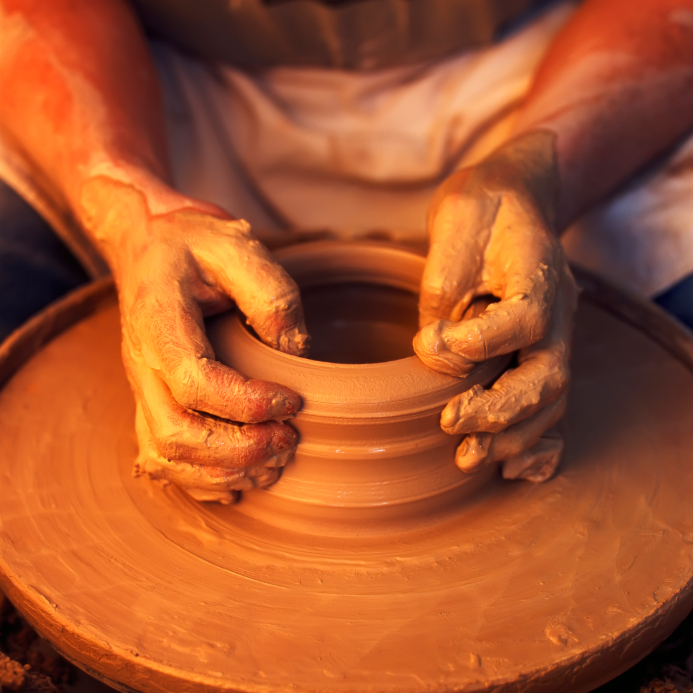
PALESTINE POTTERY.
THE biblical descriptions of pottery are singularly applicative to the present process of manufacture.
Now, in this nineteenth century, the potter sits at his frame, and turns the wheel with his feet. Or, as we read in the Apocrypha: "So doth the potter, sitting at his work and turning the wheel about with his feet: he fashioneth the clay with his arm." The potter had a heap of the prepared clay near him, and a pot of water by his side.
Taking a lump in his hand, he placed it on the top of the wheel, which revolves horizontally, and smoothed it into a low cone, like the upper end of a sugar-loaf; then thrusting his thumb into the top of it, he opened a hole down through the center, and this he constantly widened by pressing the edges of the revolving cone between his hands.
As it enlarged and became thinner, he gave, to it whatever shape he pleased, with the utmost ease and expedition.
It is evident, from numerous expressions in the Bible, that the potter's vessel was the figure of utter fragility; and to say, as David does, that Zion's King would dash his enemies in pieces like a potter's vessel, was to threaten with ruinous and remediless destruction.
We who are accustomed to strong stone-ware of considerable value, can scarcely appreciate some of these biblical references, but for Palestine they are still as appropriate and forcible as ever. Arab jars are so thin and frail that they are literally dashed to shivers by the slightest stroke. Water-jars are often broken by merely putting them down upon the floor; and the servant frequently returns from the fountain empty-handed, having had all his jars smashed to atoms by some irregular behavior of the donkey.
Harper's Magazine.